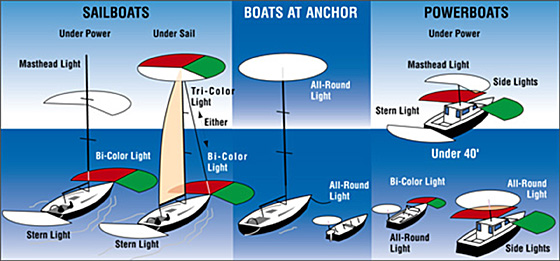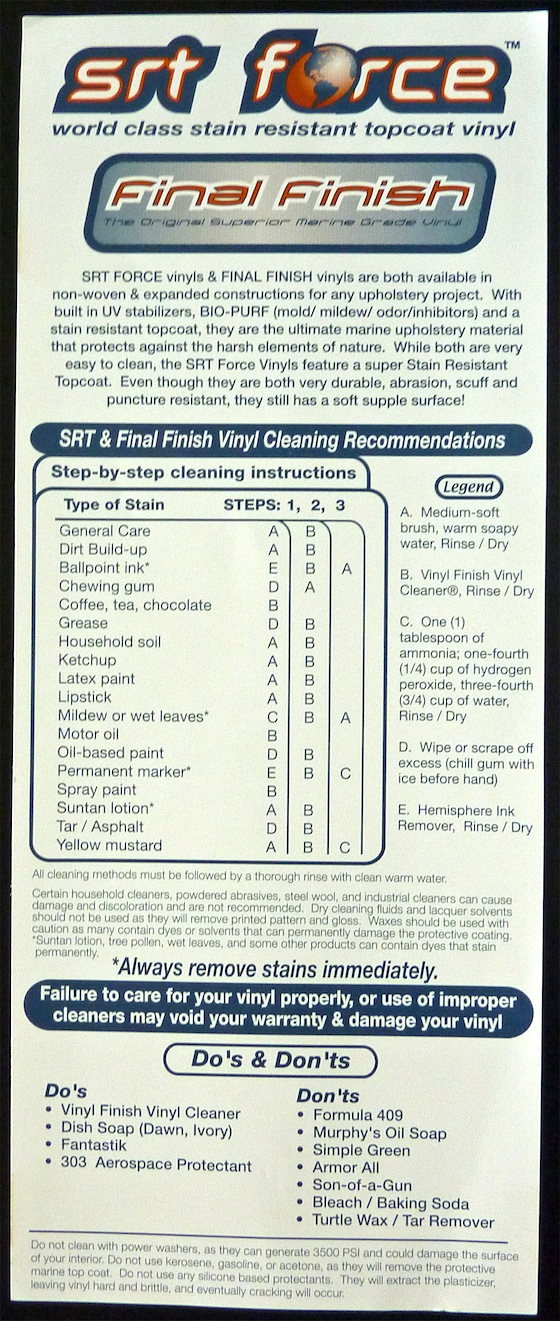2013
GREAT ENDING OF THE 2013
24 December 2013 00:00 Filed in: Boating
Escaping the winter and enjoying short vacations here but not on that boat ... I wish!
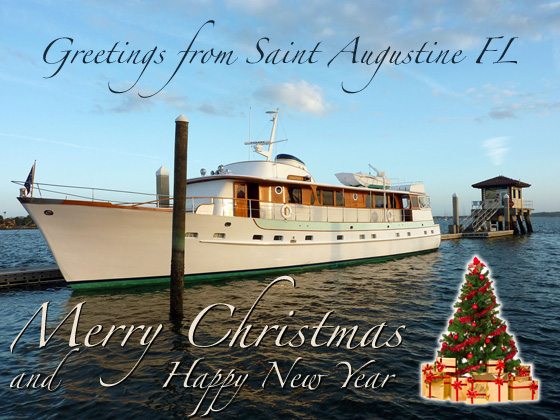

HULL DELAMINATION
01 November 2013 00:00 Filed in: Workmanship
The interesting topic emerged on Chaparral Boats user forum … here
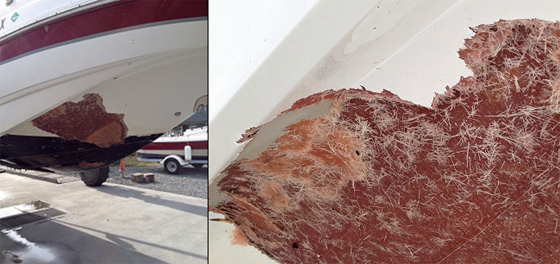
EXCUSES ASIDE …
… there is one primary reason this has happened ... poor workmanship ... period.
With plastic hulls (GRP ... polyester/plastic is a key word in this acronym), the quality of fiberglass layup makes or breaks the hull. The failure might start with deficient layer of gelcoat and blisters on the outside, or with leaky boat (as most Chaps are) inside the boat where protective gelcoat is punctured by unsealed holes, or where GRP exposed to water is not protected by gelcoat at all (like most Chaps are in the midship bilge and bow bilge area).
The delamination is a result of water getting in contact with GRP plus poor workmanship resulting in voids between layers, and/or poor adhesion between layers, and/or capillary transport of water along exposed or not saturated fibers.
You can clearly see in the pictures the area which was weak and the layer of GRP (not just gelcoat) was torn away leaving the "dry" fibers ... fiberglass layer poorly saturated with resin. You can also see the area where the external layer of GRP was separated cleanly (no adhesion) from the rest of the hull ... somebody took a lunch break, or the resin cured too fast.
It's not the user fault ... period.
BTW, keep your plastic boats as dry as possible ... sounds weird, doesn't it? Use a quality barrier coat on the outside. Chase any and all leaks inside the boat till you eradicate them.
For the reference and information … The Real Story of Osmosis Blistering
Marine surveyor view and more … Are They Fiberglass Boats Anymore?

EXCUSES ASIDE …
… there is one primary reason this has happened ... poor workmanship ... period.
With plastic hulls (GRP ... polyester/plastic is a key word in this acronym), the quality of fiberglass layup makes or breaks the hull. The failure might start with deficient layer of gelcoat and blisters on the outside, or with leaky boat (as most Chaps are) inside the boat where protective gelcoat is punctured by unsealed holes, or where GRP exposed to water is not protected by gelcoat at all (like most Chaps are in the midship bilge and bow bilge area).
The delamination is a result of water getting in contact with GRP plus poor workmanship resulting in voids between layers, and/or poor adhesion between layers, and/or capillary transport of water along exposed or not saturated fibers.
You can clearly see in the pictures the area which was weak and the layer of GRP (not just gelcoat) was torn away leaving the "dry" fibers ... fiberglass layer poorly saturated with resin. You can also see the area where the external layer of GRP was separated cleanly (no adhesion) from the rest of the hull ... somebody took a lunch break, or the resin cured too fast.
It's not the user fault ... period.
BTW, keep your plastic boats as dry as possible ... sounds weird, doesn't it? Use a quality barrier coat on the outside. Chase any and all leaks inside the boat till you eradicate them.
For the reference and information … The Real Story of Osmosis Blistering
Marine surveyor view and more … Are They Fiberglass Boats Anymore?
HOE ANCHOR CONCEPT
29 October 2013 00:00 Filed in: Boating
Here is my contribution to the OPEN SOURCE ANCHOR Project that started on Cruisers Forum, and can be accessed here.
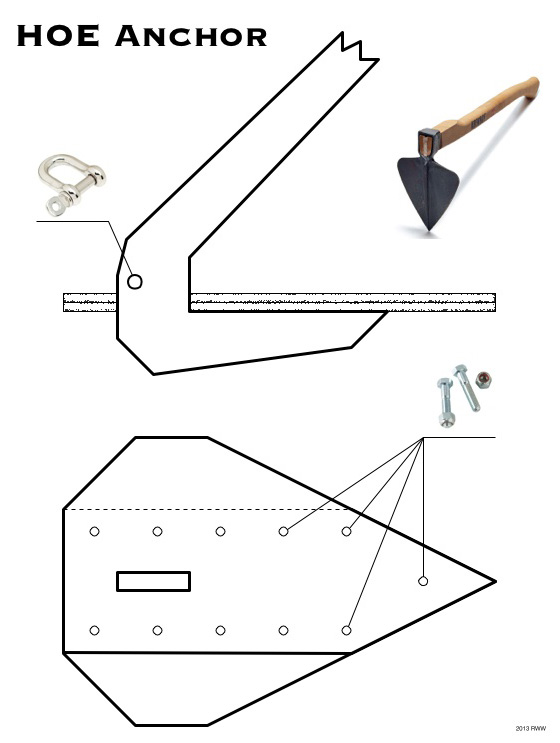
The concept is based on compilation of the bits and pieces I've learned from the project discussion. It is really KISS approach ... overlaying two identical flukes to create double thickness center, and the shank slides in from the bottom up, and is locked in place by simple shackle.

The concept is based on compilation of the bits and pieces I've learned from the project discussion. It is really KISS approach ... overlaying two identical flukes to create double thickness center, and the shank slides in from the bottom up, and is locked in place by simple shackle.
WiFi AIRMAX BULLET
01 August 2013 00:00 Filed in: Boating
This season I have installed airMAX Bullet by Ubiquiti ... works well for me.
I've connected it to wifi access point installed on the boat so the multiple users and devices can connect to Internet via the Bullet. In a bind I use 3G/LTE MIFI but it is bound to one particular cell network while with the Bullet I was able to connect to hot spots on either side of the USA/CAN border.
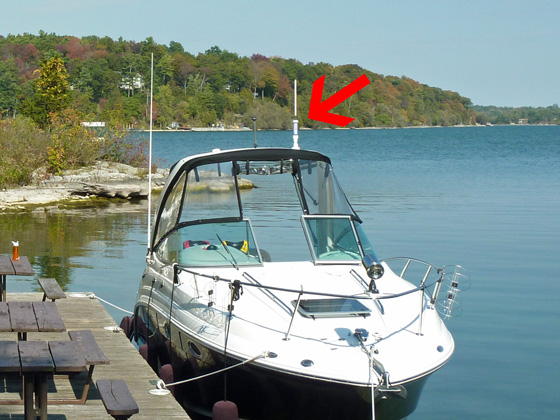
I could locate and connect to some land based hotspot, be it a hotel or ISP infrastructure, or some careless Joe most of the time. There was only one instant that I could not find anything. Usually there is plenty, especially in urban and populated areas ... sometimes too many to sort out quickly.
The web interface to locate the hot spots and make a connection is a bit tedious ... made by engineers for engineers but functional once you get the hang of it.
In my real life experience, I was able to connect to the hotspots 7 miles away at decent speed. I was able to connect to my house network at nearly full speed from 3-4 miles with limited line of sight.
It's a keeper for me.
I've connected it to wifi access point installed on the boat so the multiple users and devices can connect to Internet via the Bullet. In a bind I use 3G/LTE MIFI but it is bound to one particular cell network while with the Bullet I was able to connect to hot spots on either side of the USA/CAN border.

I could locate and connect to some land based hotspot, be it a hotel or ISP infrastructure, or some careless Joe most of the time. There was only one instant that I could not find anything. Usually there is plenty, especially in urban and populated areas ... sometimes too many to sort out quickly.
The web interface to locate the hot spots and make a connection is a bit tedious ... made by engineers for engineers but functional once you get the hang of it.
In my real life experience, I was able to connect to the hotspots 7 miles away at decent speed. I was able to connect to my house network at nearly full speed from 3-4 miles with limited line of sight.
It's a keeper for me.
LEAKY CHAP … AGAIN
01 June 2013 00:00 Filed in: Workmanship
Port side … one of the examples of Chaparral Boats’ poor workmanship.
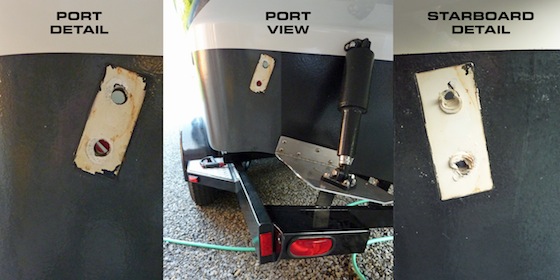

LIGHTS, LIGHTS … AND MORE LIGHTS
01 May 2013 00:00 Filed in: Seamanship
Reply to the comment on Chaparral Boats owners forum …
I don't think this is letter of the law at all ...
The dash lights are not lights at all by the letter of the law. Beside being very low intensity and barely visible from any distance, they cast a dim light on the gauges and not point outside of the boat, Similarly with properly installed cockpit and companionway lights ... there is a reason why they are low intensity and installed low to the floor (when unmodified).
The real problem is with the lights that project outside of the boat. This might include headlights, spotlights, decorative lights on the outside hull (including vent lights ... what a concept to connect them on the same circuit as cockpit lights!?), underwater lights, or badly positioned and/or too strong arch lights, cockpit lights, speaker accent lights, etc.
The above mentioned lights are not illegal ... they only must not be used while underway. It's not just about the boat being visible, it's also about the boat being "invisible" (transparent and predictable) when it comes to overall navigation at night.
There is a twofold reason for this ...
First, some of the lights will plainly blind other boaters, and/or kill their night vision. Second, some lights will obscure boat's nav lights, and/or confuse other boaters adding to the light noise and making it much more difficult to locate and identify boat's nav lights and nav aids lights. The first case affects boaters in the vicinity, the second case might affect boaters near and far, harming their ability to navigate safely.
If everyone wants to get specific letter of the law then the dashboard gauges should be turned off as well because they glow too and all the interior lights around speakers and walkways. IMO, as long as the nav lights are visible and the stern anchor light is visible at a high point then accent lights will add to your visible area making you less likely to be struck by another vessel.
I don't think this is letter of the law at all ...
The dash lights are not lights at all by the letter of the law. Beside being very low intensity and barely visible from any distance, they cast a dim light on the gauges and not point outside of the boat, Similarly with properly installed cockpit and companionway lights ... there is a reason why they are low intensity and installed low to the floor (when unmodified).
The real problem is with the lights that project outside of the boat. This might include headlights, spotlights, decorative lights on the outside hull (including vent lights ... what a concept to connect them on the same circuit as cockpit lights!?), underwater lights, or badly positioned and/or too strong arch lights, cockpit lights, speaker accent lights, etc.
The above mentioned lights are not illegal ... they only must not be used while underway. It's not just about the boat being visible, it's also about the boat being "invisible" (transparent and predictable) when it comes to overall navigation at night.
There is a twofold reason for this ...
First, some of the lights will plainly blind other boaters, and/or kill their night vision. Second, some lights will obscure boat's nav lights, and/or confuse other boaters adding to the light noise and making it much more difficult to locate and identify boat's nav lights and nav aids lights. The first case affects boaters in the vicinity, the second case might affect boaters near and far, harming their ability to navigate safely.
GASOLINE VS DIESEL ENGINE EFFICIENCY
01 April 2013 00:00 Filed in: Boating
I always wondered when some said that the diesel engine is more efficient than gasoline one ... this is what I've learned doing some research for my future boat and truck engine choices.
Traditionally gasoline engines are in the 25-30% range, meaning 70-75% energy is wasted as heat. Newer (last 3-5 years) gasoline engines with GDI (gasoline direct injection) increased the efficiency of the engines up to 35%.
Traditional diesel engines are in the 40% range (with RPMs up to 2000). Modern (last decade or so) turbo-diesel engines using electronically controlled common-rail fuel injection increases the efficiency up to 50% with the help of turbo-charging system. This also increases the engines' torque at low engine speeds (up to 2000 RPM).
Apparently, diesel engines are ahead of gasoline engines in efficiency advancements ... I will take 50% over 35% on a sound principle alone. Keep in mind, California is doing everything possible to make gasoline engines even more efficient.
Engine Thermal Efficiency
Engine efficiency of thermal engines is the relationship between the total energy contained in the fuel, and the amount of energy used to perform useful work.Traditionally gasoline engines are in the 25-30% range, meaning 70-75% energy is wasted as heat. Newer (last 3-5 years) gasoline engines with GDI (gasoline direct injection) increased the efficiency of the engines up to 35%.
Traditional diesel engines are in the 40% range (with RPMs up to 2000). Modern (last decade or so) turbo-diesel engines using electronically controlled common-rail fuel injection increases the efficiency up to 50% with the help of turbo-charging system. This also increases the engines' torque at low engine speeds (up to 2000 RPM).
Apparently, diesel engines are ahead of gasoline engines in efficiency advancements ... I will take 50% over 35% on a sound principle alone. Keep in mind, California is doing everything possible to make gasoline engines even more efficient.
MARINE CHARTPLOTTER VS IPAD w/NAV APP
01 March 2013 00:00 Filed in: Seamanship
GARMIN MARINE CHARTPLOTTER
• good GPS receiver, good location, consistently good signal• marinized and fixed device
• can be integrated with VHF radio and/or other systems
• best and multifunctional charts (BlueChart g2 Vision)
• available weather and wind, weather radar info (XM subscription)
• cumbersome route planning, easier done outside and imported back
• reliable, dedicated to the task, and tested in marine environment
MOBILE DEVICES (iPad and such)
• require external GPS receiver for dependable good signal and no delays• provide greater flexibility and choices of apps and charts/maps
• the reliability of devices and apps is not as high as dedicated devices
NAVIONICS Mobile App
• good charts
• excellent nav module and route planning (in-app purchase)
• adequate weather, wind, and tide info
NAVIMATICS Mobile App
• basic charts
• activecaptain guide
BLUECHART Mobile App
• very good charts but not as functional as BlueChart g2 Vision
• available weather, wind, and radar info (in-app purchase)
• rudimentary route planing
• activecaptain guide, gets in a way a bit, can be hidden
OTHER APPS AND TOOLS I USE
• MARINE WEATHER PRO Mobile App• POCKET GRIB Mobile App
• ANCHOR ALERT Mobile App
• MARINE TRAFFIC/mAIS Mobile Apps
• YACHTIE Mobile App
• BOATING SUITE Mobile App
• GOOGLE EARTH Mobile App (google maps)
• ACTIVECAPTAIN Website (bing maps)
IPAD AND NAVIONICS APP REVIEW
A few observations based on experience gained during the last cruising season.I still use the fixed Garmin chartplotter as a primary device for piloting and immediate surroundings awareness. The Navionics/iPad combo is my route planning and big picture navigation tool.
LIKES
- great route planning tool with in-app purchased Nav Module as well as Auto Routing which speeds up considerably the route planning,
- decent maps and timely boat position updates (although it lost the GPS signal for the duration of a few minutes on one occasion).
DISLIKES
- iPad overheats and shuts down all apps and itself if exposed to sun and/or hot air, it takes a few minutes to cool it and restart the app,
- iPad screen visibility can be iffy outside in the sun,
- multitasking iPad with constant connectivity status processing, might not be responsive enough and/or crash the nav app occasionally,
- Navionics app does not have Heads Up option, only North Up,
- Navionics app does not scroll the map while executing the planned route, nor when tracking the boat position ... this one was corrected in one of the more recent updates.
Great secondary device ... I would not relay on it exclusively.
VOLVO PENTA 8.1L FUEL EFFICIENCY
01 February 2013 00:00 Filed in: Boating
Smaller engine is more fuel efficient … really?
Let's take (RPMs) x (displacement cc) x (throttle opening %) at a given RPM and you get a fuel consumption number. So, of course, a 6.2L will consume less at 3000 RPM than a 8.1L at 3000 RPM, or at any other given RPMs with all else being equal.Now let's consider the performance of a boat equipped with either engine …
The consensus as expressed on the Chaparral Boats forum and in BoatTest tests is that the pre-2010 Chap 270 Signature and similar boats with 8.1L engine cruises at around 30-32 MPH turning at 3100 RPMs burning 12-13 GPH.
Trailer Boats magazine article tested a 2009 SeaRay Sundancer 270 with a Merc 6.2 Bravo III setup. The SeaRay 270 is very close in size and weight to a 2008 Sig 270. Cruising at speed of 31 MPH, the SeaRay 270 with 6.2L needed to spin at 4000 RPM and burned 14.8 GPH. The similar test results can be found on BoatTest site.
So, the small block (6.2L) ran 29.0% faster while its displacement is 76.5% of the big block (23.5% cc less than 8.1L). Therefore the 6.2L burns more fuel than the big block (8.1L) at the same speed over water under these particular conditions.
This is not a comprehensive, empirical calculation, just an indicative factor that the 8.1L engine can be as fuel efficient, or more efficient than 6.2L engine under comparable conditions.
In conclusion
It all depends on how you use your boat and engine, and you have to find your boat's sweet spot. Let’s look at the real world results based on BoatTest.com test done on 2010 Doral Venezia boat.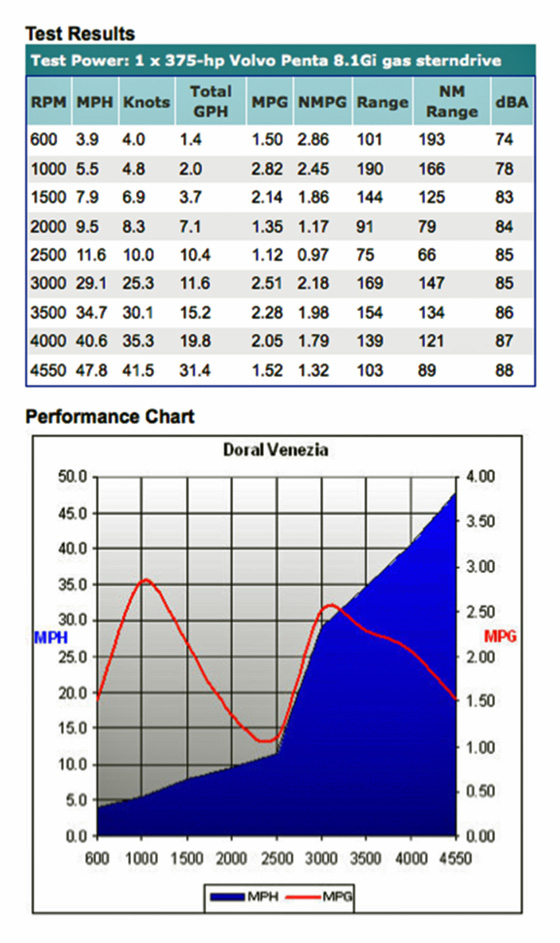
Click on the image to view the entire test results page.
Worth noting is the hallmark of this Volvo Penta 8.1L engine ... it is equally very efficient in two ranges, in 1000-1100 RPM and in 3000-3100 RPM. In both ranges the engine achieves 2.5 MPG or better mileage.
I do 80% of my boating in these two ranges. With the F4 props my VP 8.1L engine tends to be most efficient when operated in the upper limit of these two ranges.
If one has to drop from 3000 RPM to 2500 RPM or 2000 RPM, one will be getting only half or less of that mileage. If one needs to go the distance, it's more efficient to go at 3500 RPM than 2500 RPM since one will get twice as many MPG at 3500 RPM than at 2500 RPM.
Note: the MPG is a better indicator of fuel efficiency for a particular boat and engine than the GPH which is fuel usage indicator under particular conditions or an averaged fuel usage over time.
I do 80% of my boating in these two ranges. With the F4 props my VP 8.1L engine tends to be most efficient when operated in the upper limit of these two ranges.



